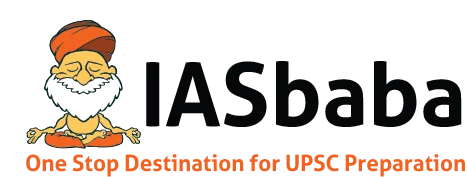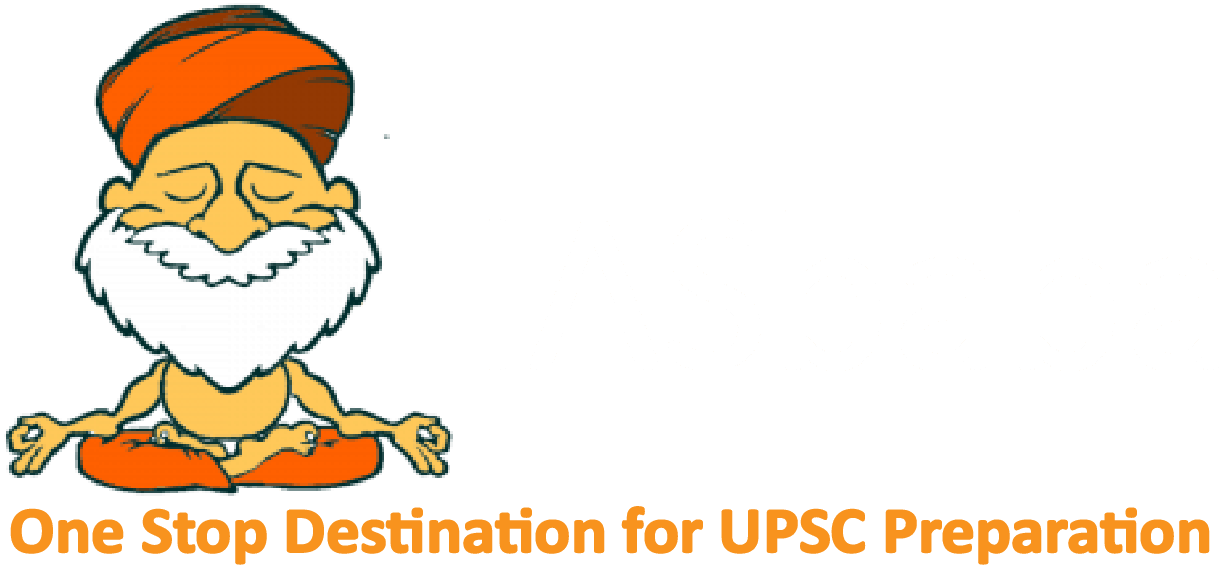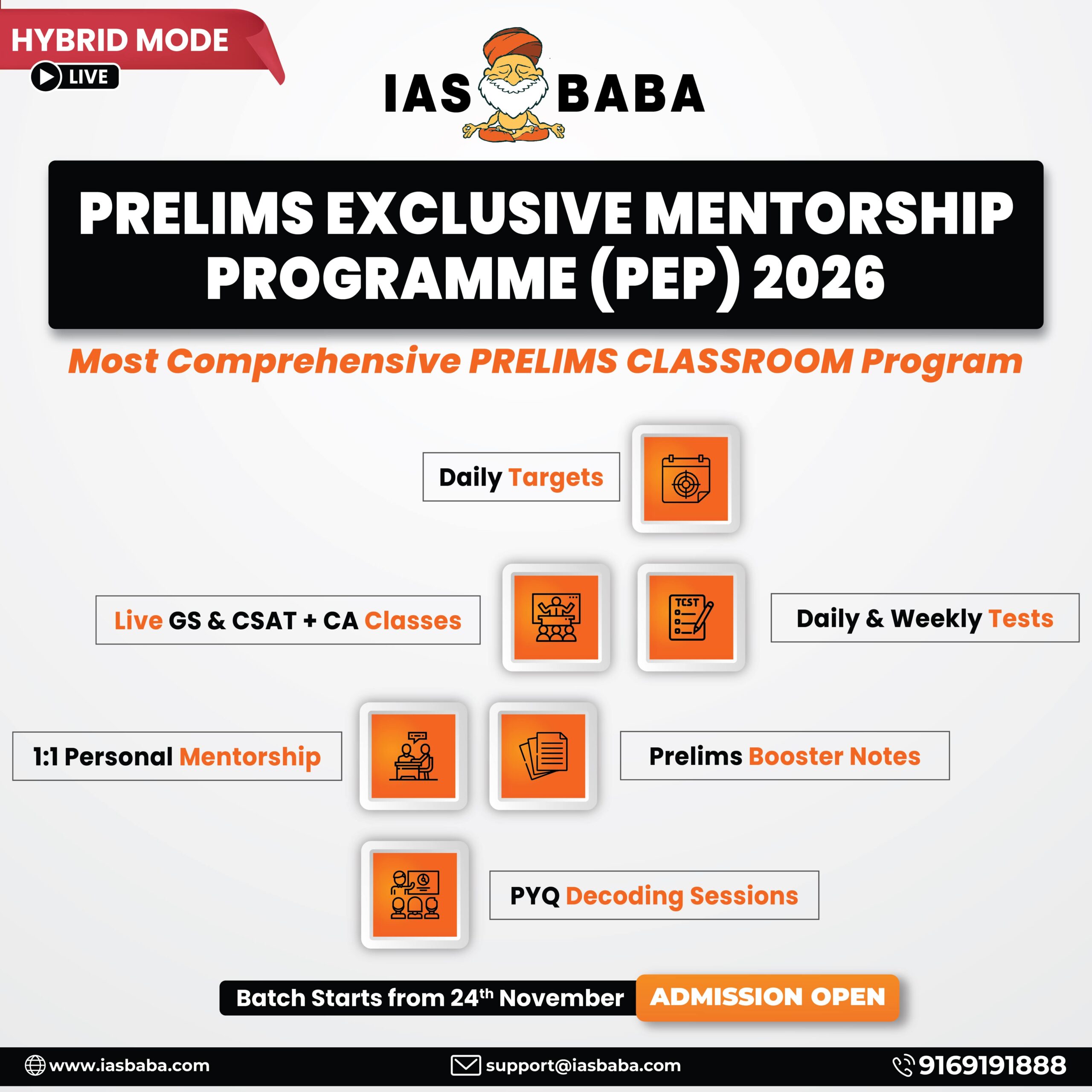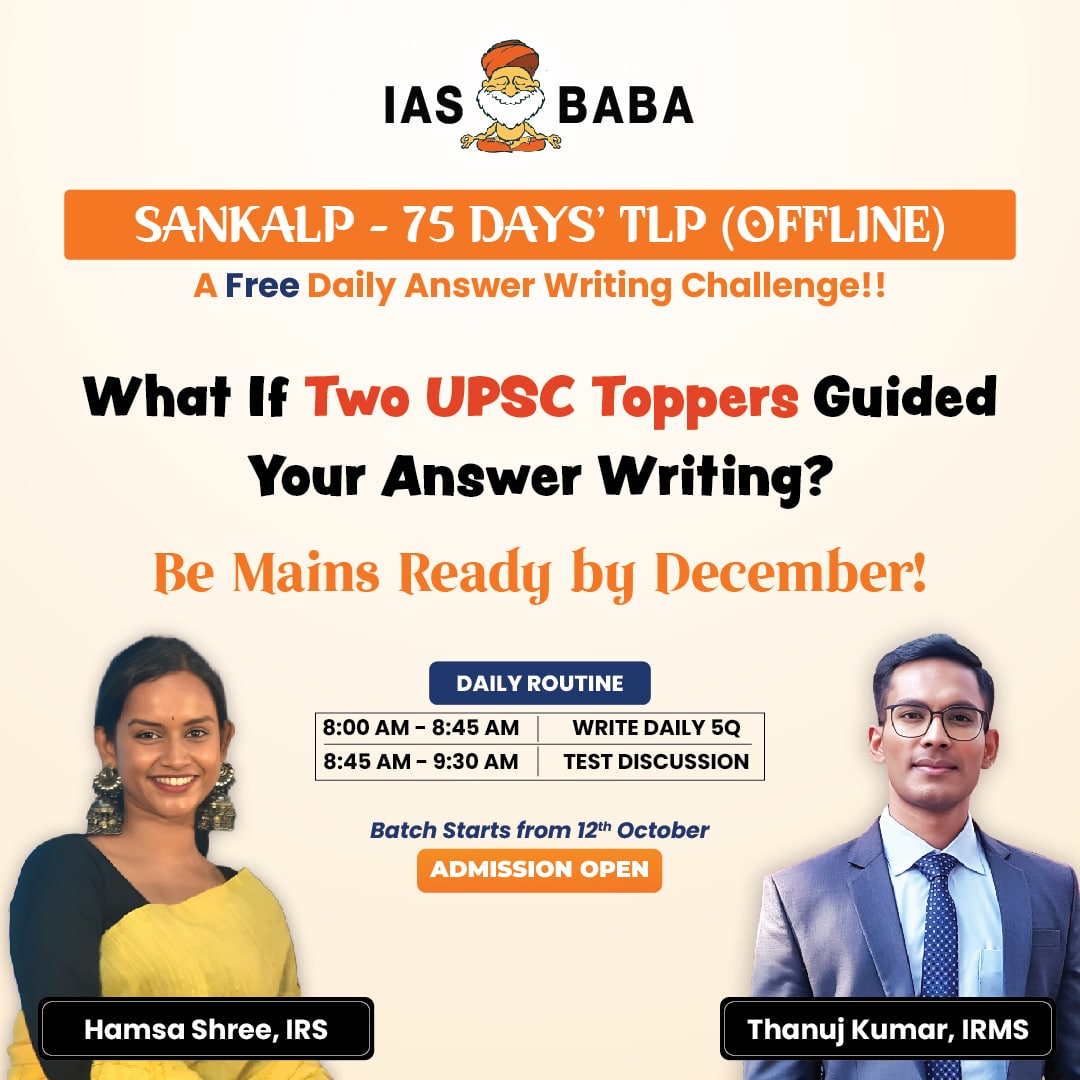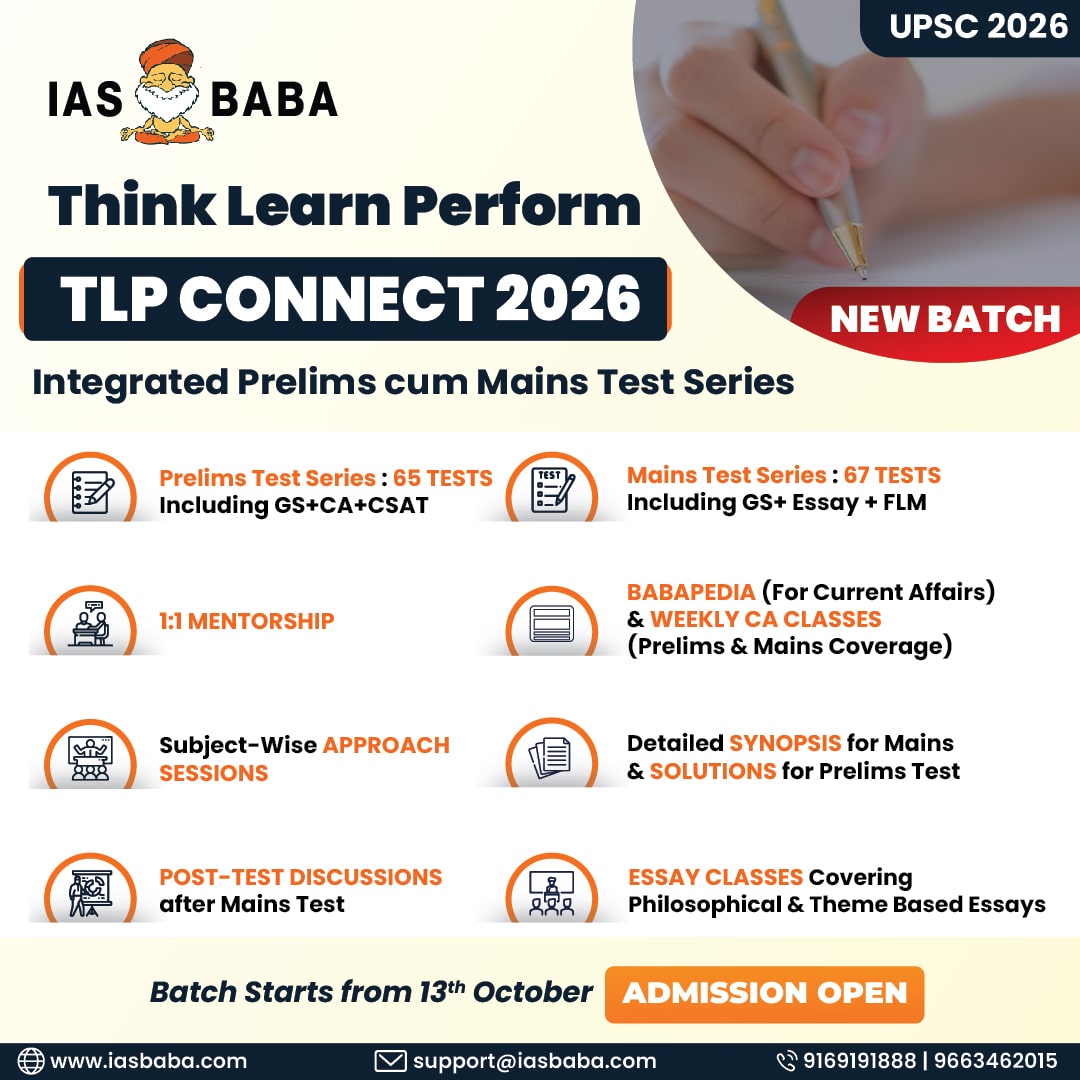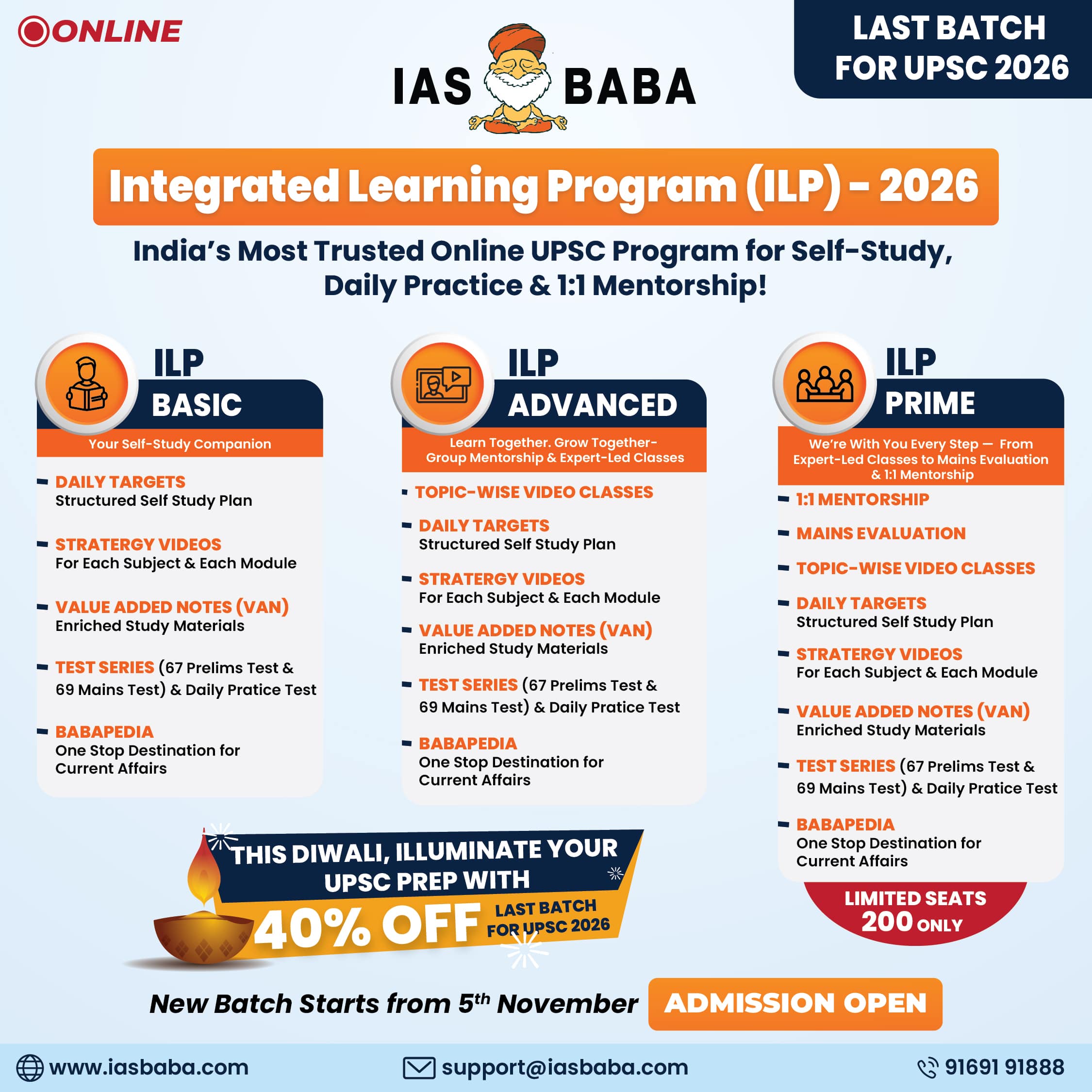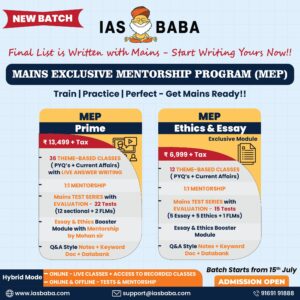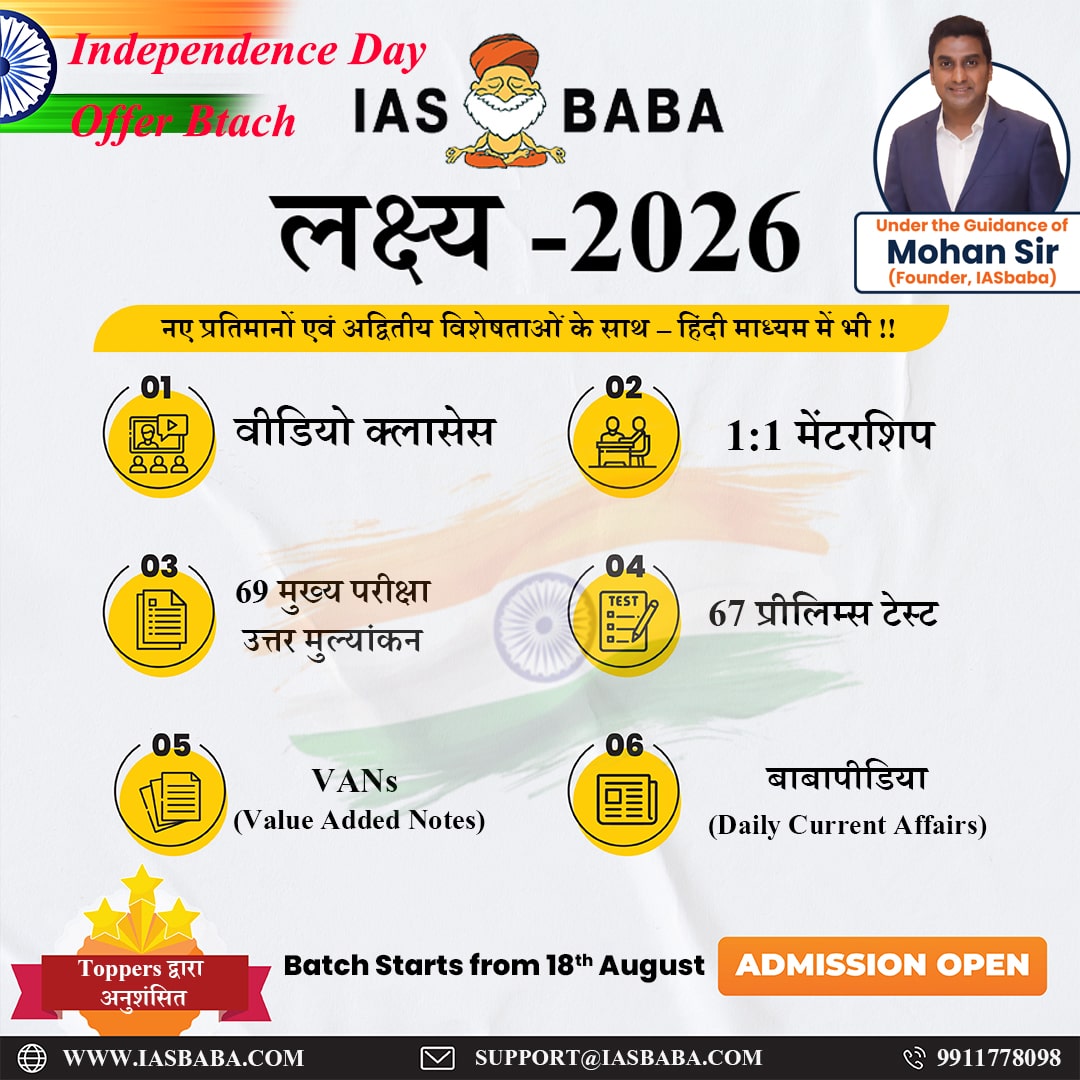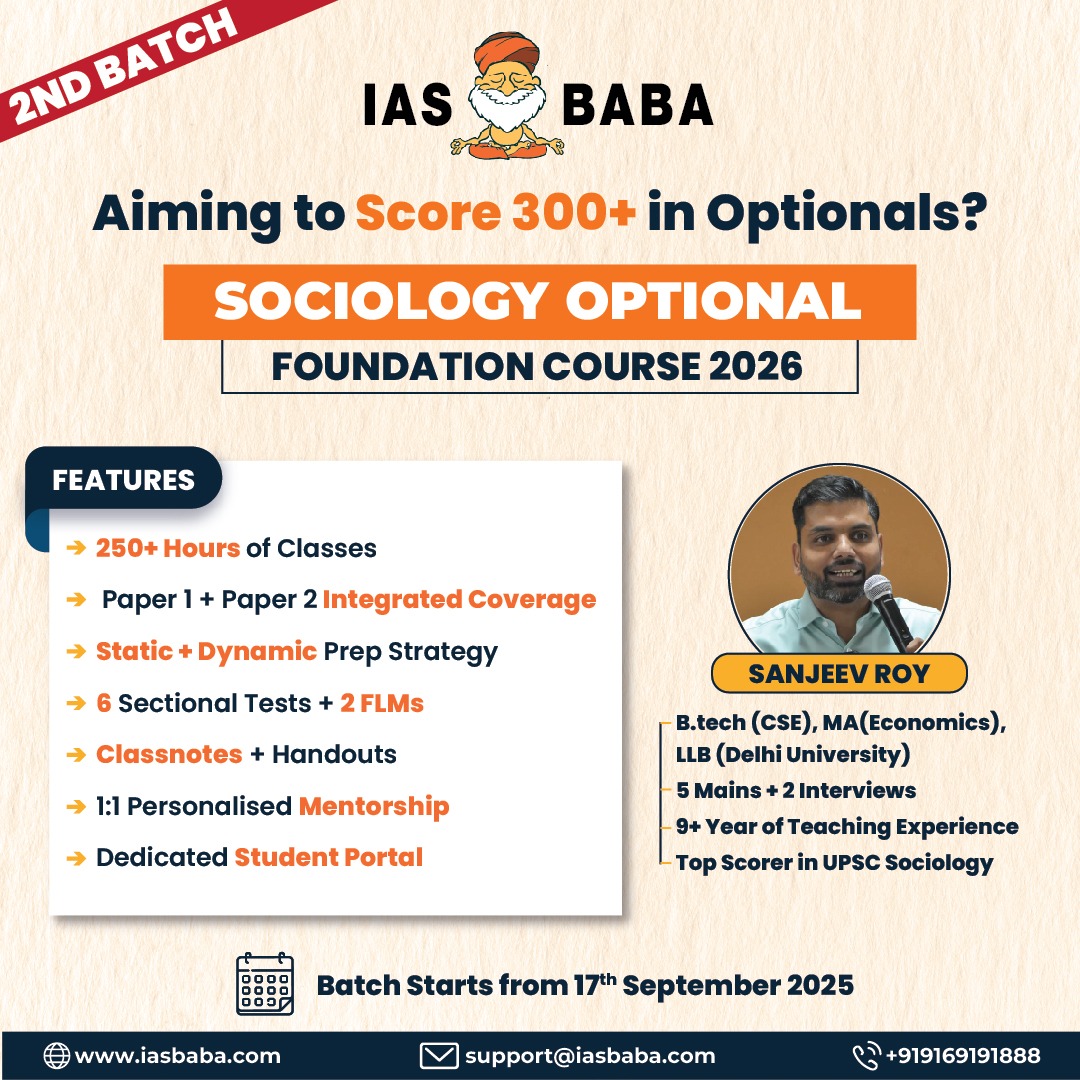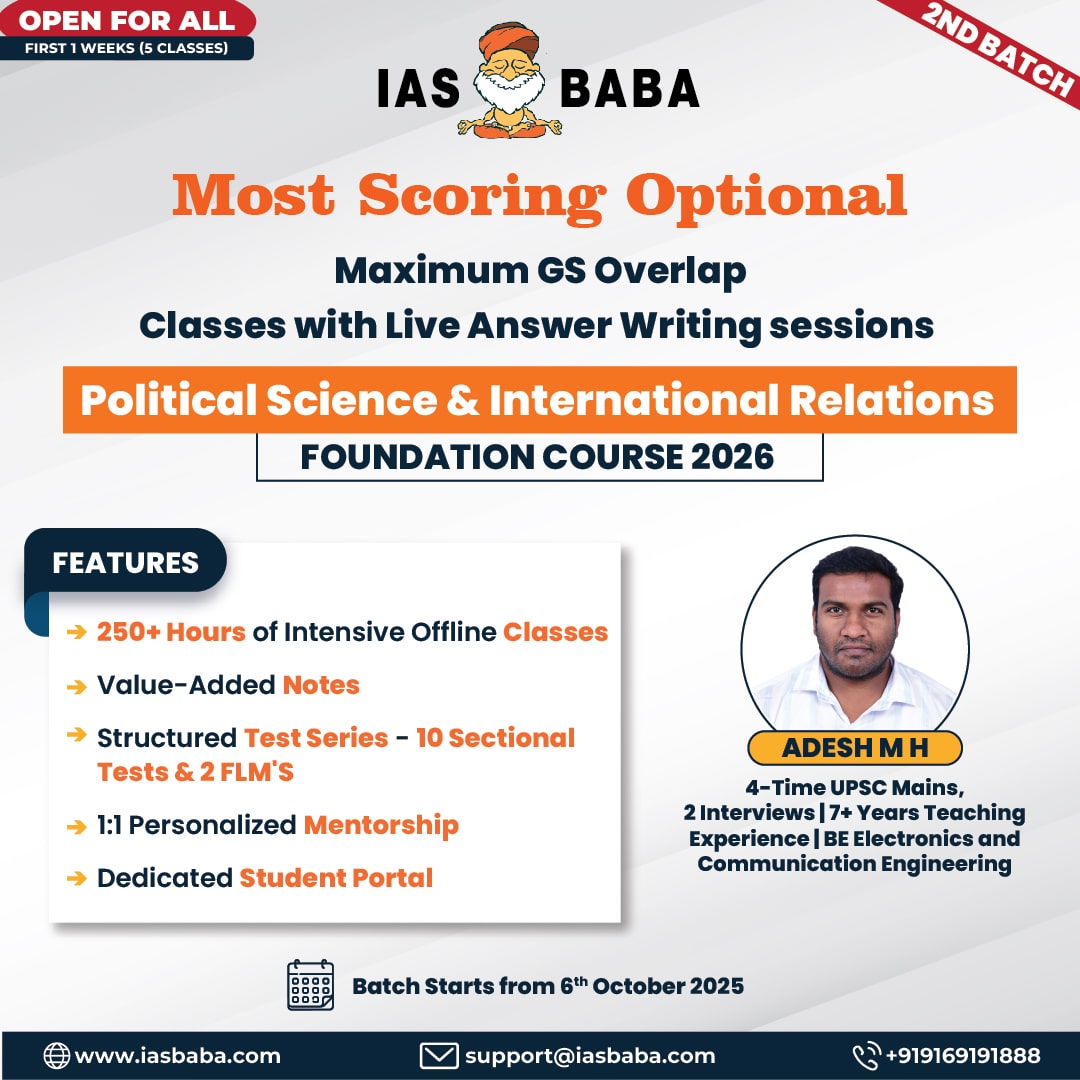IASbaba Daily Prelims Quiz
For Previous Daily Quiz (ARCHIVES) – CLICK HERE
The Current Affairs questions are based on sources like ‘The Hindu’, ‘Indian Express’ and ‘PIB’, which are very important sources for UPSC Prelims Exam. The questions are focused on both the concepts and facts. The topics covered here are generally different from what is being covered under ‘Daily Current Affairs/Daily News Analysis (DNA) and Daily Static Quiz’ to avoid duplication. The questions would be published from Monday to Saturday before 2 PM. One should not spend more than 10 minutes on this initiative.
Gear up and Make the Best Use of this initiative.
Do remember that, “the difference between Ordinary and EXTRA-Ordinary is PRACTICE!!”
Important Note:
- Don’t forget to post your marks in the comment section. Also, let us know if you enjoyed today’s test 🙂
- After completing the 5 questions, click on ‘View Questions’ to check your score, time taken, and solutions.
Test-summary
0 of 5 questions completed
Questions:
- 1
- 2
- 3
- 4
- 5
Information
To view Solutions, follow these instructions:
- Click on – ‘Start Test’ button
- Solve Questions
- Click on ‘Test Summary’ button
- Click on ‘Finish Test’ button
- Now click on ‘View Questions’ button – here you will see solutions and links.
You have already completed the test before. Hence you can not start it again.
Test is loading...
You must sign in or sign up to start the test.
You have to finish following test, to start this test:
Results
0 of 5 questions answered correctly
Your time:
Time has elapsed
You have scored 0 points out of 0 points, (0)
| Average score |
|
| Your score |
|
Categories
- Not categorized 0%
| Pos. | Name | Entered on | Points | Result |
|---|---|---|---|---|
| Table is loading | ||||
| No data available | ||||
- 1
- 2
- 3
- 4
- 5
- Answered
- Review
-
Question 1 of 5
1. Question
Consider the following activities
- Regulatory control over the import of drugs
- Approval of new drugs and clinical trials
- Approval of certain licences as Central Licence Approving Authority
- Ceiling prices for scheduled drugs
How many of the above activities are performed by The Central Drugs Standard Control Organisation (CDSCO)
Correct
Solution (c)
Explanation:
Central Drugs Standard Control Organization (CDSCO) is the National Regulatory Authority (NRA) of India for the medical devices industry under the provisions of the Drugs & Cosmetics Rules. It works under the Ministry of Health & Family Welfare.
- Under the Drugs and Cosmetics Act, CDSCO is responsible for,
- Regulatory control over the import of drugs
- Approval of new drugs and clinical trials
- Approval of certain licences as Central Licence Approving Authority
- Coordination of the activities of State Drug Control Organizations. 1,2 and 3 are correct
Drug prices in India are fixed under the Drugs (Prices Control) Order, 2013 (DPCO, 2013), primarily by the National Pharmaceutical Pricing Authority (NPPA). The NPPA sets ceiling prices for scheduled drugs listed in the DPCO and monitors prices for non-scheduled drugs, which are allowed an annual Maximum Retail Price (MRP) increase of up to 10%. The DPCO also allows for price fixation in public interest and for new drugs. 4 is incorrect
Incorrect
Solution (c)
Explanation:
Central Drugs Standard Control Organization (CDSCO) is the National Regulatory Authority (NRA) of India for the medical devices industry under the provisions of the Drugs & Cosmetics Rules. It works under the Ministry of Health & Family Welfare.
- Under the Drugs and Cosmetics Act, CDSCO is responsible for,
- Regulatory control over the import of drugs
- Approval of new drugs and clinical trials
- Approval of certain licences as Central Licence Approving Authority
- Coordination of the activities of State Drug Control Organizations. 1,2 and 3 are correct
Drug prices in India are fixed under the Drugs (Prices Control) Order, 2013 (DPCO, 2013), primarily by the National Pharmaceutical Pricing Authority (NPPA). The NPPA sets ceiling prices for scheduled drugs listed in the DPCO and monitors prices for non-scheduled drugs, which are allowed an annual Maximum Retail Price (MRP) increase of up to 10%. The DPCO also allows for price fixation in public interest and for new drugs. 4 is incorrect
-
Question 2 of 5
2. Question
The Kafala system, practiced in many Middle Eastern countries, primarily refers to:
Correct
Solution (a)
Explanation:
The Kafala system is a sponsorship system used in several Gulf Cooperation Council (GCC) countries, including Saudi Arabia, Qatar, Kuwait, Bahrain, Oman, and the United Arab Emirates. It governs the legal status of migrant workers, particularly those from other countries in Asia and Africa, who come to work in these countries. It binds migrant workers to a specific employer, known as the “kafeel,” who is responsible for the worker’s visa and legal status.
Incorrect
Solution (a)
Explanation:
The Kafala system is a sponsorship system used in several Gulf Cooperation Council (GCC) countries, including Saudi Arabia, Qatar, Kuwait, Bahrain, Oman, and the United Arab Emirates. It governs the legal status of migrant workers, particularly those from other countries in Asia and Africa, who come to work in these countries. It binds migrant workers to a specific employer, known as the “kafeel,” who is responsible for the worker’s visa and legal status.
-
Question 3 of 5
3. Question
Consider the following statements about ASEAN
- The official motto of ASEAN is “One Vision, One Identity, One Community.”
- ASEAN follows a consensus-based decision-making process where all member states must agree on key decisions.
Which of the above statements is/are correct?
Correct
Solution (c)
Explanation:
-
- The Association of Southeast Asian Nations is a regional organization which was established to promote political and social stability amid rising tensions among the Asia-Pacific’s post-colonial states. It was established on 8 August 1967 in Bangkok, Thailand, with the signing of the ASEAN Declaration (Bangkok Declaration) by the founding fathers of ASEAN: Indonesia, Malaysia, Philippines, Singapore and Thailand. 8th August is observed as ASEAN Day.
- Motto: The motto of ASEAN is “One Vision, One Identity, One Community”. Hence, Statement 1 is correct
- Decision Making: The primary mode of decision-making in ASEAN is consultation and consensus. Hence, Statement 2 is correct
Incorrect
Solution (c)
Explanation:
-
- The Association of Southeast Asian Nations is a regional organization which was established to promote political and social stability amid rising tensions among the Asia-Pacific’s post-colonial states. It was established on 8 August 1967 in Bangkok, Thailand, with the signing of the ASEAN Declaration (Bangkok Declaration) by the founding fathers of ASEAN: Indonesia, Malaysia, Philippines, Singapore and Thailand. 8th August is observed as ASEAN Day.
- Motto: The motto of ASEAN is “One Vision, One Identity, One Community”. Hence, Statement 1 is correct
- Decision Making: The primary mode of decision-making in ASEAN is consultation and consensus. Hence, Statement 2 is correct
-
Question 4 of 5
4. Question
Consider the following statements regarding the Gaganyaan Mission
- The Gaganyaan mission aims to send a crew of three Indian astronauts to Low Earth Orbit for three days and return them safely to Earth.
- The launch vehicle for Gaganyaan is a human-rated version of ISRO’s LVM3 rocket.
- All astronauts selected for the first Gaganyaan mission are from the Indian Navy.
How many of the above statements are correct?
Correct
Solution (b)
Explanation:
- The Gaganyaan mission aims to send a crew of three Indian astronauts into Low Earth Orbit (LEO) for three days and return them safely to Earth. The mission’s goals include testing critical technologies like life support and crew escape systems, and the spacecraft will be brought down for recovery in Indian waters. Hence Statement 1 is correct
- The launch vehicle for Gaganyaan is a human-rated version of ISRO’s LVM3 rocket, specifically called the Human Rated Launch Vehicle Mark-3 (HLVM3). It is an upgraded and modified version of the original LVM3, reconfigured to meet stringent human-rating requirements for crew safety. Hence Statement 2 is correct
- All astronauts selected for the first Gaganyaan mission are from the Indian Air Force, not the Indian Navy. Four Indian Air Force officers have been announced as the astronaut crew, and they have been undergoing rigorous training for the mission. The four astronauts are Group Captain Prasanth Balakrishnan Nair, Group Captain Ajit Krishnan, Group Captain Angad Pratap, and Wing Commander Shubhanshu Shukla. Hence Statement 3 is Incorrect
Incorrect
Solution (b)
Explanation:
- The Gaganyaan mission aims to send a crew of three Indian astronauts into Low Earth Orbit (LEO) for three days and return them safely to Earth. The mission’s goals include testing critical technologies like life support and crew escape systems, and the spacecraft will be brought down for recovery in Indian waters. Hence Statement 1 is correct
- The launch vehicle for Gaganyaan is a human-rated version of ISRO’s LVM3 rocket, specifically called the Human Rated Launch Vehicle Mark-3 (HLVM3). It is an upgraded and modified version of the original LVM3, reconfigured to meet stringent human-rating requirements for crew safety. Hence Statement 2 is correct
- All astronauts selected for the first Gaganyaan mission are from the Indian Air Force, not the Indian Navy. Four Indian Air Force officers have been announced as the astronaut crew, and they have been undergoing rigorous training for the mission. The four astronauts are Group Captain Prasanth Balakrishnan Nair, Group Captain Ajit Krishnan, Group Captain Angad Pratap, and Wing Commander Shubhanshu Shukla. Hence Statement 3 is Incorrect
-
Question 5 of 5
5. Question
Consider the following statements about Skilling for AI Readiness (SOAR) program
- The SOAR Programme aims to integrate artificial intelligence education into India’s school curriculum from class 6 to 12.
- The primary objective of SOAR is to develop a future-ready generation with AI skills and ethical understanding to navigate AI-driven sectors
Which of the statement(s) given above is/are correct?
Correct
Solution (b)
Explanation:
Skilling for AI Readiness (SOAR) targets school students from class 6 to class 12 and educators to enable a future-ready India in this increasingly digital world. Hence Statement 1 is Incorrect
The SOAR initiative by India’s Ministry of Skill Development and Entrepreneurship (MSDE) has the primary objective of developing an AI-ready generation by equipping school students and teachers with AI skills and an understanding of ethical AI. Hence Statement 2 is Correct
Incorrect
Solution (b)
Explanation:
Skilling for AI Readiness (SOAR) targets school students from class 6 to class 12 and educators to enable a future-ready India in this increasingly digital world. Hence Statement 1 is Incorrect
The SOAR initiative by India’s Ministry of Skill Development and Entrepreneurship (MSDE) has the primary objective of developing an AI-ready generation by equipping school students and teachers with AI skills and an understanding of ethical AI. Hence Statement 2 is Correct
- Current Affairs Quiz, IAS Daily Current Affairs Quiz, IAS UPSC Current Affairs Quiz, IAS UPSC Prelims Quiz, IASbaba's Current Affairs Prelims Quiz, IASbaba's Daily Quiz, IASbaba's UPSC Quiz, Prelims Current Affairs Quiz, UPSC Current Affairs Quiz, UPSC Current Affairs Quiz IASbaba, UPSC Daily Current Affair Quiz, UPSC IAS Daily Quiz
